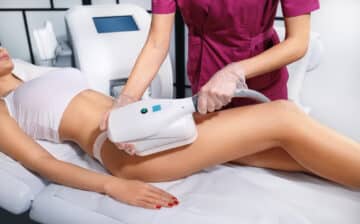By now, we can all appreciate the fact that mental wellness is the foundation for building a healthy and happy life. But while most people acknowledge its importance, many still fail to give their mental health the attention it deserves.
Sadly, the harsh reality is that overlooking your mental health will put huge restrictions on all aspects of your life. On a brighter note, implementing a few lifestyle changes will yield positive results in next to no time. Better still, when you keep up those new habits, the benefits can last a lifetime.
Here are seven simple steps that will transform your life for the better.
#1. Prioritize Sleep Health
The average person should get 7-9 hours of rest each night. So, getting this one aspect of your life right will ensure that one-third of your day is under control. When combined with the huge impact that sleep has on your mood, energy levels, and overall wellness, it is the perfect starting point.
There are many ways to support healthy sleep habits, starting with a suitable mattress and latex pillows. Of course, selecting the right duvet tog rating for the climate and your sleeping preferences will also aid the cause. Crucially, though, you need to adopt better nighttime habits. This starts with avoiding screen time for an hour before bed.
If possible, try to get into the habit of sleeping at the same time each night will aid your circadian rhythm.

#2. Understand The Importance Of Nutrition
Following a healthy diet isn’t only about managing your calorie intake to maintain a healthy weight and BMI. Ensuring that your body receives the right nutrients is of equal importance. Not least because your mindset will improve when your body functions properly.
Crucially, you should also extend your commitment to choosing the right foods for good brain health. Focus and attention supplements for kids and adults can transform your physical and mental wellness for the better. Aside from putting you in a better frame of mind, the fact that you will be able to achieve more with your day is sure to boost long-term mental wellness.
Perhaps most importantly, though, you must stay hydrated throughout the day. The impact this has on your attention and general mood is huge.
#3. Appreciate The Role Of Physical Health
Healthy body, healthy mind. While it is an old and simplistic cliche, it is one that still holds a lot of truth. Physical health and mental health are very closely linked. Therefore, going the extra mile to keep your body in good health will naturally have a positive influence on your mental wellness. So, this should be at the forefront of your thinking.
For most people, increased activity levels are the best way to become physically healthier. Whether it’s joining the gym, playing team sports, or going for walks and bike rides doesn’t matter. Working your body promotes improved musculoskeletal health. Meanwhile, endorphins are released during exercise to put you in a positive mindset.
If you fail to take physical health seriously, any changes aimed at aiding mental wellness will only deliver limited results.

#4. Set Goals
As humans, we have an intrinsic desire to improve and grow. Therefore, it’s imperative that you have something to aim towards. Otherwise, you can fall into something of a rut. Once you do, it can be very difficult to escape, which will leave you with feelings of unfulfillment or a sense that you could be doing more.
Goals can relate to your career, home, relationships, or learning new skills. Either way, it’s imperative that you focus on setting SMART goals. For starters, it keeps you motivated with measurable milestones. Moreover, each success will build your confidence and spur you on. Your general mindset will benefit greatly from this.
The positive trajectory can influence your mindset as you tackle many of the other lifestyle changes mentioned in this post.
#5. Review Your Support Network
Only you can take responsibility for your mental health. However, you should never overlook the influence that the people you surround yourself with will have on the situation. If your mental health is currently in a poor place, it may be worth reviewing your support network. Friends, colleagues, or relatives could be bringing negativity to your world.
There are many ways that someone could be damaging your mental health. Maybe they ask to borrow money and don’t pay it back. Or perhaps they lead you to bad decisions or distract you from your goals. Whether due to jealousy or through no ill intention, toxic friendships are harming you. Cutting them out of your life may be necessary.
When you do, it doesn’t only allow you to break free from their negative influence. It also means you can dedicate more time to the positive people in your life.

#6. Address The Past
Sometimes in life, addressing the past is the only way to build a better future. While you cannot change what has happened, you can at least look to improve your relationship with those moments. Whether it’s something you feel guilty about or an experience of trauma, ignorance is anything but bliss.
Working with a psychologist or mental health expert can be useful in many situations. Whether an accident has changed your life or a situation has put a relationship under strain doesn’t matter. Working through the problem with a professional can help you understand the situation. And develop coping mechanisms or ways to put things right.
Either way, the ability to finally break free from the grip it has on your life is a wonderful thing. In turn, you will be better positioned to start the next chapter in style.
#7. Focus On Fighting Stress
Making positive additions to your life is important. Nonetheless, you cannot ignore the negatives that are holding you back. Stress is undoubtedly one of the worst culprits as it threatens both your physical and mental wellness. While you can’t eliminate it, reducing the presence of stress will transform your life.
Many of the issues above will reduce your stress levels. For the best results, you should also look to incorporate a few minutes of daily meditation or deep breathing. Embracing relaxed hobbies like gardening can also be very helpful. Organizing your home and finances are further steps that bring positive results.
Crucially, simply feeling in better control of your life will help you avoid stress and unlock a better frame of mind. Frankly, it is the least that you deserve.





